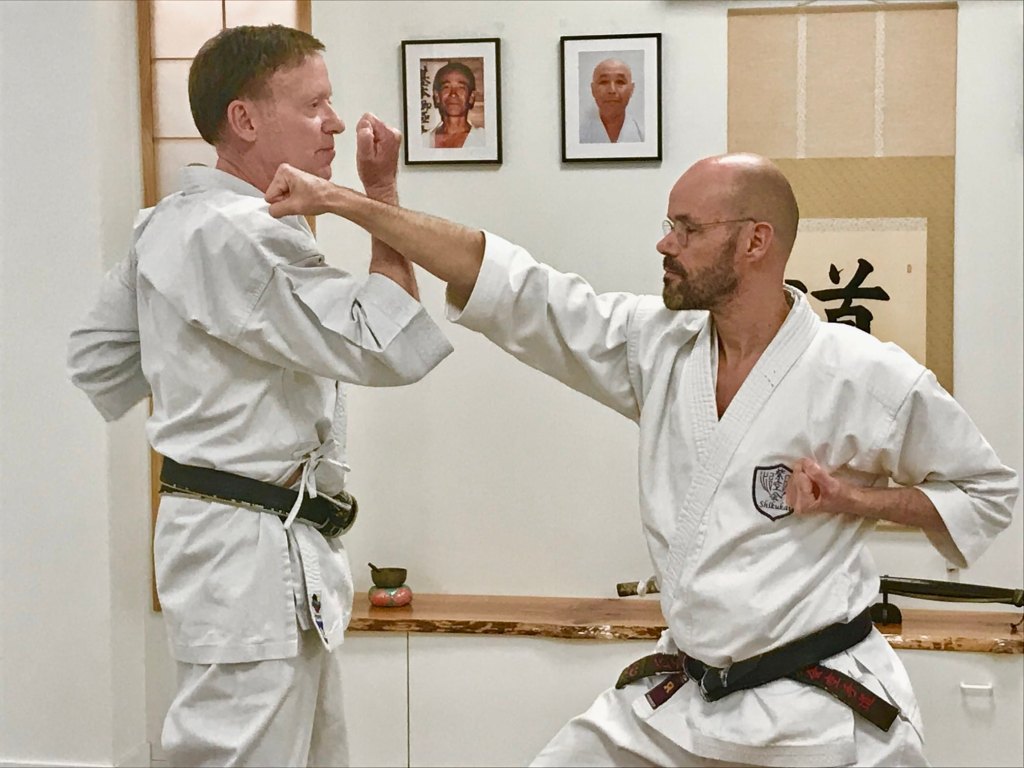Technical notes from the March 2022 Holland Course.

The notes are mostly intended for the students who attended the three-day weekend course but I will present them in a way that others may benefit. I will also steer clear of overly-complicated Japanese concepts that may take a whole blog post to themselves.
Underpinning Themes.
Some of the warm-up exercises were designed to encourage the students to actually map the lines of movement and tension throughout their body, this was done in a static (but dynamic) way, but also tracking these tensions and connections within movement, looking for an orchestrated and efficient whole-body movement.
I also wanted to encourage an attitude of ‘why are we doing this?’ to specific aspects of our training. This is something that Sugasawa Sensei has often spoken about, although Sensei has always stressed that an intellectual understanding alone is not enough; these things must be explored through training and sweat.
How to develop an integrated dynamic to your technique.
This was addressed initially through examining the non-blocking, non-punching hand, what I sometimes tongue in cheek call the ‘non-operative side’. Of course the pulling/retracting hand is not really exclusively about the movement of the hand/arm, it is actually working as a result of what is happening deep within your own body, it is an extended reflection of the orchestrated work of the pelvis, the spine and the deeper abdominal muscles, this combination of factors energises the limbs and the energy that originates in those areas ripples and spirals outwards to create what appears as effortless energy all firing off with the right timing – well, that’s the objective anyway.
Some movements are designed to challenge your relationship with your centre.
This was where we focussed on Pinan Sandan, which seems to pack so much in. Of course, it exists in all movement, Otsuka Sensei’s intentions for Junzuki and Gyakuzuki no Tsukomi are yet another more extreme example. As in Pinan Sandan, you can be extended and stretched to such a degree that you have to acknowledge how close you may be to losing your centre and easily destabilised.
A technical challenge!
How many different ways in Wado movement are we demanding of the various sections of our body to either move in contradictory directions, or to lock-up one section while allowing free movement in another? A clue…It’s all over the place.
Destabilising your opponent.
In this one I asked that we really try to think three-dimensionally (if not four-dimensionally, if we include a ‘time’ factor). We want to destabilise our opponent in ever more sophisticated ways – one-dimension is not enough for a finely-honed instrument such as Wado. We can tip, tilt, crush, nudge, we can even use gravity (amplified through our own body movement), we can also take energy from the floor; all of these are part of our toolkit (on the Saturday we did this through what can usefully be described as a ‘shunt’ into our partner’s weak line).
What do our ‘wider’ stances give us?
Side-facing cat stance is the widest stretched stance you will ever be asked to make (a major demand on the flexibility of the pelvis) with Shikodachi as a slightly lesser challenge, but why? What does it give us? Of course, with all of these things there are a number of actual ‘benefits’ but our focus was on the dynamics of opening the hips out to the maximum. Not in a static way; but instead as an empowered dynamic, the body operating like a spring whose tensions wind and unwind supported by the energisation of the entire body. It’s easy to see and feel when it’s not working as it should, but you just have to put the work in.
Of course, over the weekend we strayed into many other areas, but I wanted these to be our take-aways.
Tim Shaw
03/17/2022 at 9:38 am
[…] (I have published a separate blog post on the Shouwa Jyuku website as a series of supporting notes for the students who attended the course. Link). […]
LikeLike